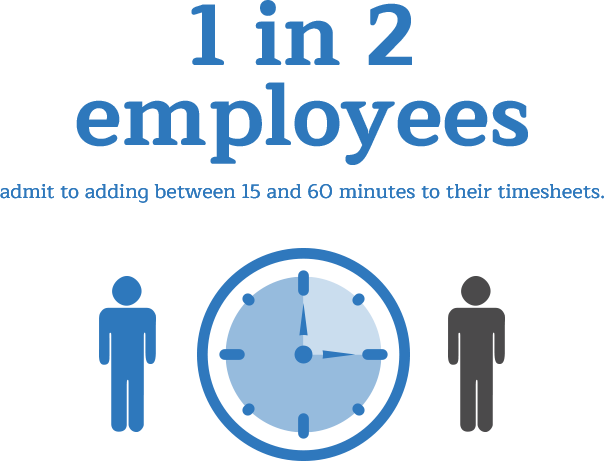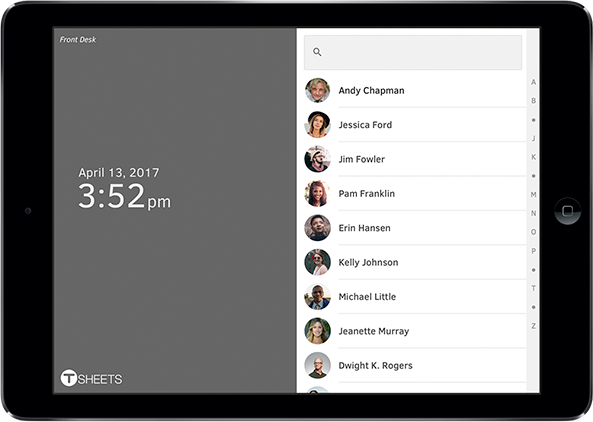Time theft occurs when an employee is paid for any amount of time they haven’t actually worked. In some cases, time theft occurs when an employee pads their timesheet at the beginning or end of their shift. Other times, time theft is unintentional, when an employee forgets to clock out for a break. Either way, an independent survey of 1,000 employees found 49 percent admitted to time theft, with 46 percent adding between 15 and 60 minutes to their timesheets and the remaining 3 percent adding more than 60 minutes.¹
Time tracking for freelancers and How to prevent employee time theft and save thousands on payroll
When you pay employees for every hour worked, you curb time theft – and save US employers $11 billion per year

What Is Time Theft?

That’s not to say that most employees commit time theft maliciously. More often than not, time theft points to a flaw in the company’s time tracking system – not a problem with employees. If an employee isn’t sure exactly how much time they’ve worked in a day or shift (because they track time manually in spreadsheets or on paper time cards), they will likely estimate their total time worked based on their schedule or simply round their times up or down.
For instance, if an employee is scheduled to work at 8:00 a.m. and they arrive at 8:07, they will likely record an 8 a.m. arrival on their time card, or they”ll ask a coworker to clock in for them at the appropriate time (this is known as “buddy punching“). Similarly, if an employee is scheduled to work until 5:00 p.m., but they leave at 4:51, they will likely record their clock out time as 5 p.m. on the dot.
A few minutes here and there might seem harmless, but that time can add up. If 49 percent of the nation”s hourly employees – that”s 38 million people – added just 15 minutes a week to their timesheets, this would cost U.S. employers more than $11 billion a year.

I was losing nearly 30 hours per week … essentially paying for a full-time employee that didn’t exist
“If all 35 of my employees were fudging just 10 minutes per day at clock in and clock out and at the beginning and end of lunch, that means I was losing nearly 30 hours per week,” QuickBooks Time CEO Matt Rissell recalled in a recent Forbes article. “I was essentially paying for a full-time employee that didn’t exist.”
Rissell later reflected, “The first time we used QuickBooks Time, our time theft problem was instantly eradicated and my bookkeeper reported that we had saved more than $2,400 on our first payroll!”

How Can I Prevent Time Theft?
Eliminate employee guesswork by implementing an automated, mobile time tracking system with GPS location capabilities. Many small businesses still rely on paper and pencil to track employee time. Unfortunately, paper timesheets are the most susceptible to human error and, in turn, time theft.
Find out what employees really think about GPS tracking in the workplace
On the other hand, accurate-to-the-second, automated time tracking, like QuickBooks Time, ensures that employees are paid for every second actually worked, increases employee accountability, and makes it nearly impossible for time theft to occur – even accidentally.
Here’s how it works:
When an employee clocks in or out using QuickBooks Time on their mobile device, their location is automatically recorded – so you can make sure they’re actually on site, even if you aren't.
Plus, location tracking helps to hold employees even more accountable for their time, because all timesheet changes are recorded and stored in QuickBooks Time. The end result is a paperless audit trail that can’t be edited by employees or admins – to support FLSA compliance and DCAA regulations.
QuickBooks Time also allows employees the option to clock in using text or dial in services, making it possible for admins to restrict employees from clocking in or out using any device other than their own. For employees all clocking from one location, QuickBooks Time Clock transforms any tablet, laptop, or computer into a traditional punch clock for complete employee accountability. Employees simply clock in on site using a unique four-digit PIN.

Imagine the impact on your business if you could eliminate errors in 50 percent of your timesheets. Even if these errors are 15 inaccurate minutes per employee, correcting them could add up to thousands of dollars in savings every year. Some QuickBooks Time customers are saving that much every time they run payroll. Track more accurate time, combat employee time theft.

Using QuickBooks Time we save approximately $2,000 per month + have better data quality + higher morale + lower frustration.